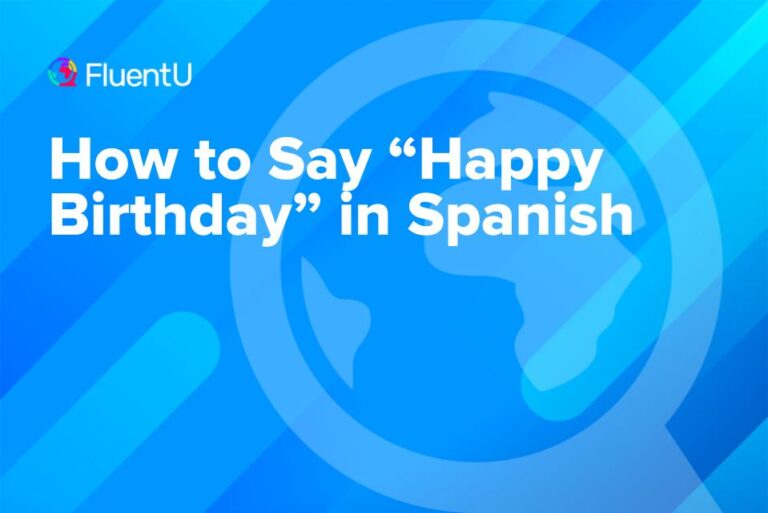How and When to Use Spanish Contractions “Al” and “Del”

Spanish contractions—two words combined into one—help make the language sound more fluid and natural. They’re an important part of Spanish grammar that every language learner should get familiar with.
There are only two Spanish contractions—al and del—and using them is an integral part of speaking correct Spanish. The grammar rules behind Spanish contractions are simple to learn, but the hardest part is remembering to actually use them in your daily Spanish speech.
Download: This blog post is available as a convenient and portable PDF that you can take anywhere. Click here to get a copy. (Download)
What Are the Spanish Contractions?
The Spanish language has two contractions formed with the definite article el (the, used for masculine nouns): al and del.
Al is a contraction of the two Spanish words a and el, and can mean many things, such as “at the” or “to the.”
Del is a contraction of the words de and el. It can mean “from the” and “of the,” among other things.
| a + el | al |
| de + el | del |
In English, contractions are optional. In Spanish, this isn’t the case. If you have the words a and el or de and el next to each other, you must contract them (except when el is part of a proper noun, as explained later on).
Saying voy a ir a el parque (I am going to the park), for example, is grammatically incorrect.
Note that contractions only happen with the article el. You’ll never see a contraction with the other articles: la, los and las.
When to Use Al
Al is used whenever the preposition a is followed by the masculine singular definite article el (except for when el is part of a proper noun).
In the following sections, we’ll go over some of the most common scenarios when a and el are used together as al in a sentence.
To describe motion toward a place
Like the English preposition “to,” use a to describe somebody moving towards a place. When that place happens to begin with the article el, you get al.
Ella va al cine todos los viernes.
She goes to the movie theater every Friday.
To describe location
Use a like the English “at” to describe a location.
Te espero al final de la cola.
I’ll wait for you at the end of the line.
To describe the end of a period of time
Like the English “to” or “until,” use a to describe when a period of time ends. Again, if your ending point happens to begin with el, use the contraction al.
Ella va a estar aquí del lunes que viene al viernes siguiente.
She’s going to be here from next Monday until the following Friday.
To introduce an indirect object, after certain verbs
Certain verbs in Spanish require an a after them. After the a comes the indirect object of the sentence. If the indirect object starts with el, you’ll form the contraction al. One example of such a verb is acercarse a (to approach).
Me acerco al coche.
I approach the car.
Note: There are many other usages of a—such as in time expressions and before infinitive verbs—but since those never match up with the preposition el, they’re not relevant to this article. If you want to know more about when to use a, SpanishDict provides a pretty thorough rundown.
When to Use Del
Del is used whenever the preposition de is followed by el (again, except for when el is part of a proper noun). The following are some common examples of when de and el appear together in Spanish sentences.
To describe possession or ownership
In Spanish, there’s no equivalent to the English possessive ’s. Instead, to express possession, write the object, followed by de, followed by the owner.
La camiseta del chico
The boy’s shirt
To describe origin
When talking about where you or somebody else is from, use de. In some cases, this will require you to use the contraction del.
Soy del norte de España.
I’m from the north of Spain.
To talk about the beginning of a period of time
As stated previously, a demarcates the end of a period of time. On the flip side, de can express the beginning of a period of time.
Me voy de vacaciones del 1 al 15 de marzo.
I’m going on vacation from March 1st to 15th.
To introduce an indirect object, after certain verbs.
Like with a, the preposition de is sometimes an integral part of verbs. One example is the verb acordarse de (to remember).
¿Te acuerdas del chico que conocimos en la feria?
Do you remember the boy who we met at the fair?
Again, there are many uses of de that aren’t covered here because they rarely or never turn into del.
When Not to Form a Contraction
As previously mentioned, there’s an important exception when a and de don’t form a contraction with el.
Don’t form a contraction if the el is part of a proper noun, such as a city name or book title. Many cities and towns in the Spanish-speaking world—and even some countries—start with articles. Take, for example, the Argentinian town El Chalten.
Vamos a ir al Chalten.
Vamos a ir a El Chalten.
We’re going to go to El Chalten.
The same happens with book and movie titles that start with el.
Jorge Luis Borges es el autor del “otro.”
Jorge Luis Borges es el autor de “El otro.”
Jorge Luis Borges is the author of “The Other.”
Also, don’t form a contraction when you’re dealing with the pronoun él rather than el. These two little words might look similar, but that accent mark makes all the difference.
While el (the) is a definite article used with masculine nouns, él (with an accent mark) is a pronoun for masculine-gendered people or nouns, like the English words “he,” “him” or “it.”
Le dí el regalo al.
Le dí el regalo a él.
I gave the gift to him.
Me llegó un correo del esta mañana.
Me llegó un correo de él esta mañana.
I got an email from him this morning.
To get more familiar with Spanish contractions, try to expose yourself to them as they’re used in actual conversations. A good method is by listening to Spanish audio clips or watching Spanish videos. One resource for this is the language learning program FluentU.
FluentU takes authentic videos—like music videos, movie trailers, news and inspiring talks—and turns them into personalized language learning lessons.
You can try FluentU for free for 2 weeks. Check out the website or download the iOS app or Android app.
P.S. Click here to take advantage of our current sale! (Expires at the end of this month)

Pay attention whenever you see or hear Spanish contractions so they naturally become part of your language use.
Speaking with Spanish contractions will make a great deal of difference in the fluency and correctness of your Spanish.
So the next time vas al bar (you go to the bar) with your Spanish-speaking friends, you can think to yourself:
!Me acuerdo del artículo que leí en FluentU! (I remember the article I read on FluentU!)
Download: This blog post is available as a convenient and portable PDF that you can take anywhere. Click here to get a copy. (Download)
And One More Thing…
If you've made it this far that means you probably enjoy learning Spanish with engaging material and will then love FluentU.
Other sites use scripted content. FluentU uses a natural approach that helps you ease into the Spanish language and culture over time. You’ll learn Spanish as it’s actually spoken by real people.
FluentU has a wide variety of videos, as you can see here:

FluentU brings native videos within reach with interactive transcripts. You can tap on any word to look it up instantly. Every definition has examples that have been written to help you understand how the word is used. If you see an interesting word you don’t know, you can add it to a vocab list.

Review a complete interactive transcript under the Dialogue tab, and find words and phrases listed under Vocab.

Learn all the vocabulary in any video with FluentU’s robust learning engine. Swipe left or right to see more examples of the word you’re on.

The best part is that FluentU keeps track of the vocabulary that you’re learning, and gives you extra practice with difficult words. It'll even remind you when it’s time to review what you’ve learned. Every learner has a truly personalized experience, even if they’re learning with the same video.
Start using the FluentU website on your computer or tablet or, better yet, download the FluentU app from the iTunes or Google Play store. Click here to take advantage of our current sale! (Expires at the end of this month.)







